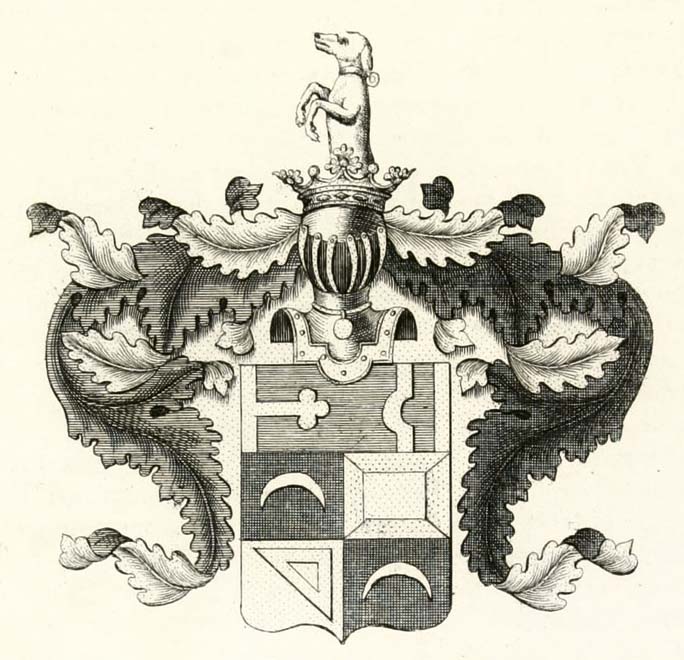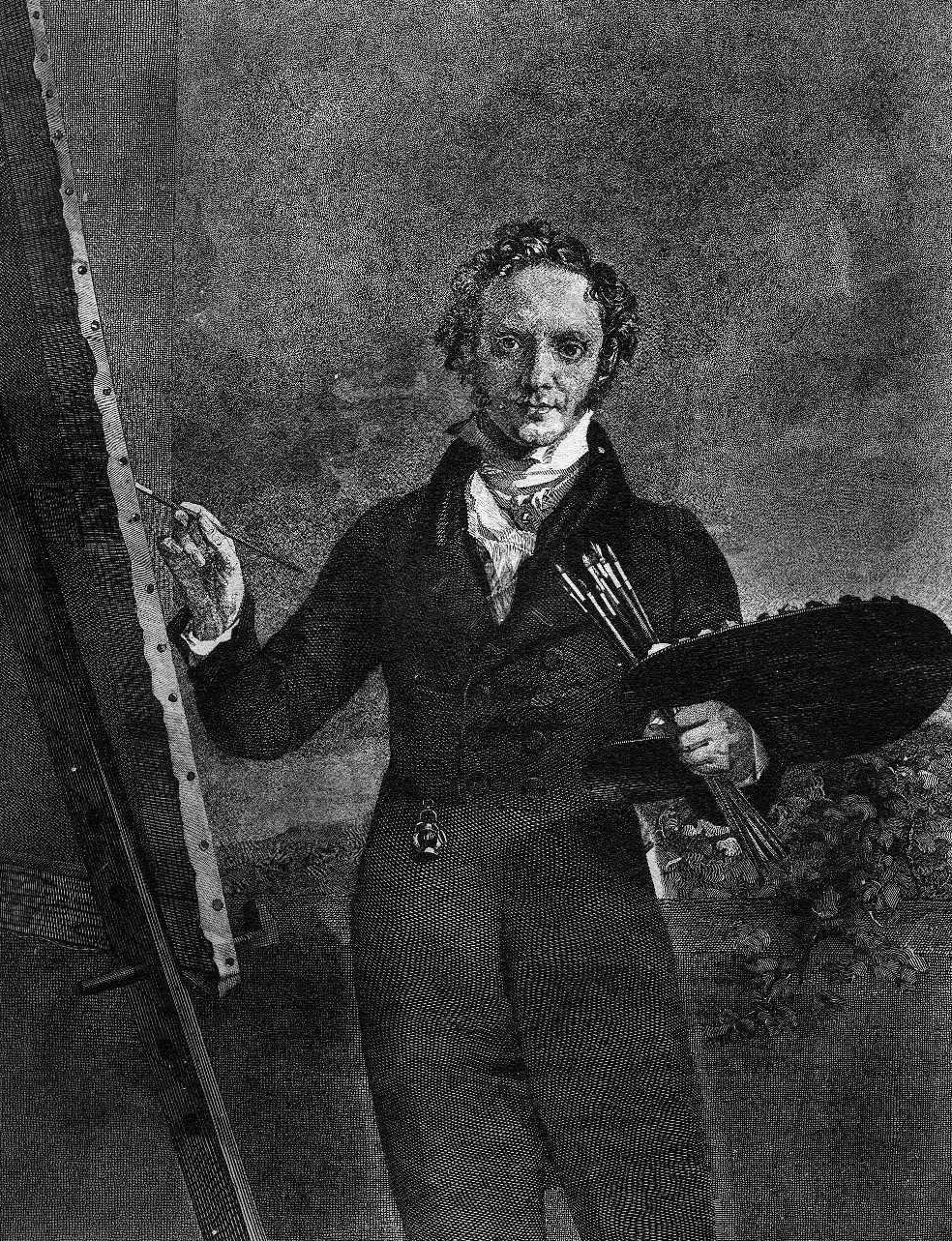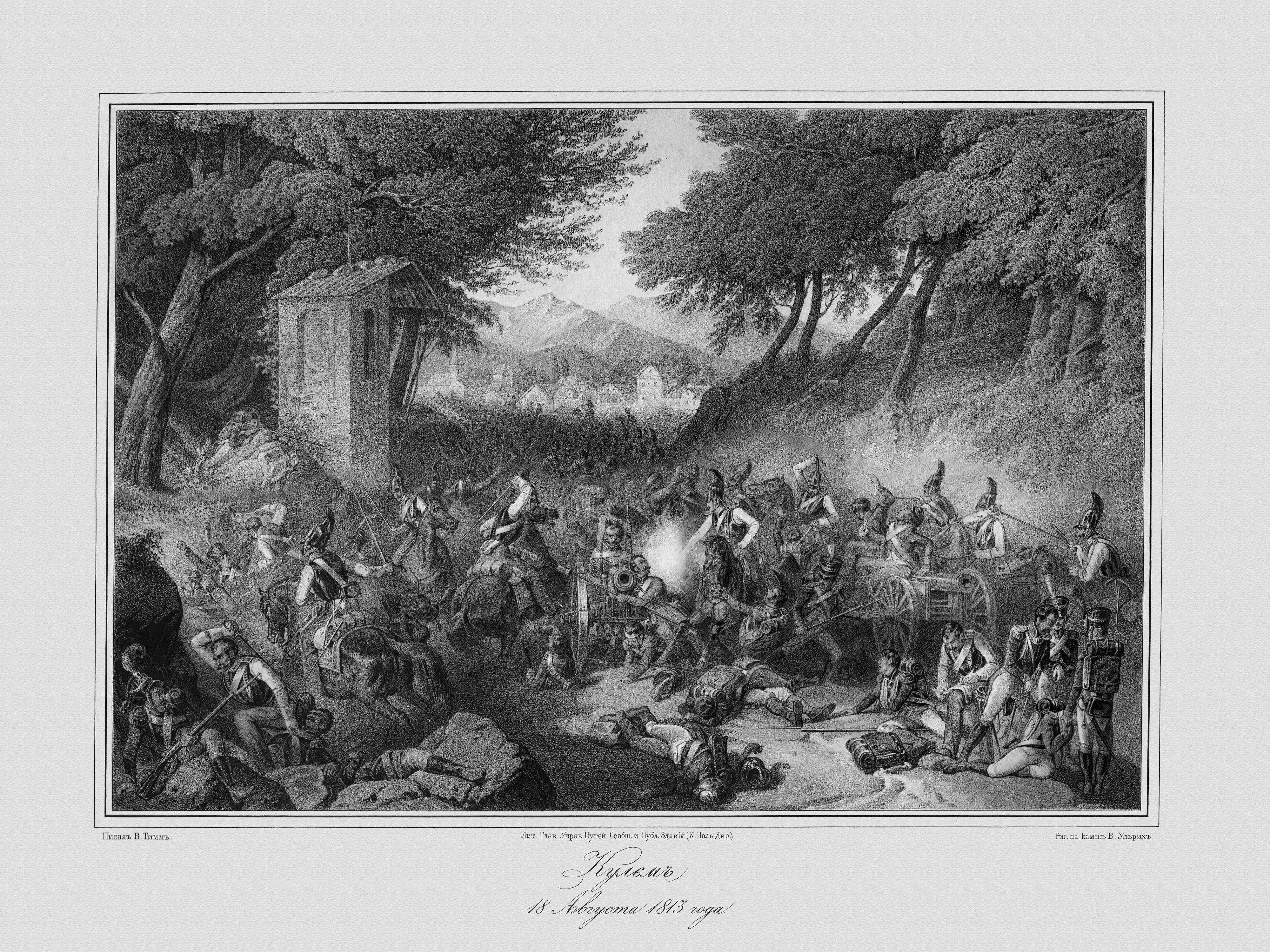|
Mikhail Andreyevich Miloradovich
Count Mikhail Andreyevich Miloradovich (russian: –ď—Ä–į—Ą –ú–ł—Ö–į–łŐĀ–Ľ –ź–Ĺ–ī—Ä–ĶŐĀ–Ķ–≤–ł—á –ú–ł–Ľ–ĺ—Ä–įŐĀ–ī–ĺ–≤–ł—á, sh-Cyrl, –ď—Ä–ĺ—Ą –ú–ł—Ö–į–ł–Ľ –ź–Ĺ–ī—Ä–Ķ—ė–Ķ–≤–ł—õ –ú–ł–Ľ–ĺ—Ä–į–ī–ĺ–≤–ł—õ ''Grof Mihail Andrejevińá Miloradovińá''; – ), spelled Miloradovitch in contemporary English sources, was a Russian general prominent during the Napoleonic Wars, who, on his father side, descended from Serbian noble family and the katun clan of Miloradovińá from Hum, in present-day Bosnia and Herzegovina. He entered military service on the eve of the Russo-Swedish War of 1788‚Äď1790 and his career advanced rapidly during the reign (1796-1801) of Emperor Paul I. He served under Alexander Suvorov during Italian and Swiss campaigns of 1799. Miloradovich served in wars against France and the Ottoman Empire, earning distinction in the Battle of Amstetten (1805), the capture of Bucharest (1806), the Battle of Borodino (September 1812), the Battle of Tarutino (October 1812) and ... [...More Info...] [...Related Items...] OR: [Wikipedia] [Google] [Baidu] |
George Dawe
George Dawe (6 February 1781 – 15 October 1829) was an English portraitist who painted 329 portraits of Russian generals active during Napoleon's invasion of Russia for the Military Gallery of the Winter Palace. He relocated to Saint Petersburg in 1819, where he won acclaim for his work from the artistic establishment and complimentary verses by Pushkin. He was the son of Philip Dawe, a successful mezzotint engraver who also produced political cartoons relating to the events of the Boston Tea Party. One of his brothers was Henry Edward Dawe, also a portraitist. He died on 15 October 1829 in Kentish Town, United Kingdom. Life and career Early life and studies George Dawe was born on 6 February 1781 to Philip Dawe and Jane in Brewer Street, in the parish of St James's in Westminster. Philip was an artist and engraver in mezzotint who had worked with Hogarth and Joseph Mallord William Turner and who also produced satirical political cartoons about life in America which are ... [...More Info...] [...Related Items...] OR: [Wikipedia] [Google] [Baidu] |
Battle Of Tarutino
The Battle of Tarutino (russian: –Ę–į—Ä—É—ā–ł–Ĺo) was a part of Napoleon's invasion of Russia. In the battle Russian troops under the command of Bennigsen defeated French troops under the command of Joachim Murat. The battle is sometimes called the Battle of Vinkovo or the Battle of Chernishnya after the local river. Many historians claim that the latter name is more fitting because the village of Tarutino was 8 km from the described events. Preceding events After the battle of Borodino, Kutuzov realized that the Russian army would not survive one more large engagement and ordered his soldiers to retreat to the south of Moscow to reinforce his army. At first it retreated in the south-east direction along the Ryazan road. When the army reached the Moskva River it crossed it and turned to the west to the Old Kaluga road. The army pitched camp in a village of Tarutino near Kaluga. At the same time small units of Cossacks continued moving along the Ryazan road misleading Fr ... [...More Info...] [...Related Items...] OR: [Wikipedia] [Google] [Baidu] |
Imperial Russian Army
The Imperial Russian Army (russian: –†—ÉŐĀ—Ā—Ā–ļ–į—Ź –ł–ľ–Ņ–Ķ—Ä–įŐĀ—ā–ĺ—Ä—Ā–ļ–į—Ź –įŐĀ—Ä–ľ–ł—Ź, tr. ) was the armed land force of the Russian Empire, active from around 1721 to the Russian Revolution of 1917. In the early 1850s, the Russian Army consisted of more than 900,000 regular soldiers and nearly 250,000 irregulars (mostly Cossacks). Precursors: Regiments of the New Order Russian tsars before Peter the Great maintained professional hereditary musketeer corps known as '' streltsy''. These were originally raised by Ivan the Terrible; originally an effective force, they had become highly unreliable and undisciplined. In times of war the armed forces were augmented by peasants. The regiments of the new order, or regiments of the foreign order (''–ü–ĺ–Ľ–ļ–ł –Ĺ–ĺ–≤–ĺ–≥–ĺ —Ā—ā—Ä–ĺ—Ź'' or ''–ü–ĺ–Ľ–ļ–ł –ł–Ĺ–ĺ–∑–Ķ–ľ–Ĺ–ĺ–≥–ĺ —Ā—ā—Ä–ĺ—Ź'', ''Polki novovo (inozemnovo) stroya''), was the Russian term that was used to describe military units that were formed in the Tsardom of Russi ... [...More Info...] [...Related Items...] OR: [Wikipedia] [Google] [Baidu] |
Golden Weapon "For Bravery"
The Gold Sword for Bravery (russian: –ó–ĺ–Ľ–ĺ—ā–ĺ–Ķ –ĺ—Ä—É–∂–ł–Ķ "–ó–į —Ö—Ä–į–Ī—Ä–ĺ—Ā—ā—Ć") was a Russian award for bravery. It was set up with two grades on 27 July 1720 by Peter the Great, reclassified as a public order in 1807 and abolished in 1917. From 1913 to 1917 it was renamed the Saint George Sword (''–ď–Ķ–ĺ—Ä–≥–ł–Ķ–≤—Ā–ļ–ĺ–Ķ –ĺ—Ä—É–∂–ł–Ķ'') and considered one of the grades of the Order of St. George. Select recipients *General Alexander von Kaulbars *Generalissimo Alexander Suvorov *Field Marshal Mikhail Kutuzov *General Pyotr Bagration *Field Marshal Peter Wittgenstein *Field Marshal Ivan Paskevich *Field Marshal Hans Karl von Diebitsch *Admiral Alexander Menshikov *General Mikhail Gorchakov *Field Marshal Mikhail Vorontsov *General Nikolay Muravyov-Karsky *General Vasili Bebutov *Field Marshal Friedrich Wilhelm Rembert von Berg *General Yegor Tolstoy *Tsar Alexander II *General Aleksey Brusilov *General Dmitry Nadyozhny *General Anton Denikin *Admiral Alexander ... [...More Info...] [...Related Items...] OR: [Wikipedia] [Google] [Baidu] |
Iron Cross
The Iron Cross (german: link=no, Eisernes Kreuz, , abbreviated EK) was a military decoration in the Kingdom of Prussia, and later in the German Empire (1871‚Äď1918) and Nazi Germany (1933‚Äď1945). King Frederick William III of Prussia established it on 17 March 1813 during the Napoleonic Wars (EK 1813). The award was backdated to the birthday (10 March) of his late wife, Queen Louise. Louise was the first person to receive this decoration (posthumously). Recommissioned Iron Cross was also awarded during the Franco-Prussian War (EK 1870), World War I (EK 1914), and World War II (EK 1939). During the 1930s and World War II, the Nazi regime superimposed a swastika on the traditional medal. The Iron Cross was usually a military decoration only, though there were instances awarded to civilians for performing military functions, including Hanna Reitsch, who received the Iron Cross, 2nd class, and Iron Cross, 1st Class, and Melitta Schenk Gr√§fin von Stauffenberg, who received ... [...More Info...] [...Related Items...] OR: [Wikipedia] [Google] [Baidu] |
Order Of Saints Maurice And Lazarus
The Order of Saints Maurice and Lazarus ( it, Ordine dei Santi Maurizio e Lazzaro) (abbreviated OSSML) is a Roman Catholic dynastic order of knighthood bestowed by the royal House of Savoy. It is the second-oldest order of knighthood in the world, tracing its lineage to AD 1098, and it is one of the rare orders of knighthood recognized by papal bull, in this case by Pope Gregory XIII. In that bull, Pope Gregory XIII bestowed upon Emmanuel Philibert, Duke of Savoy and his Savoy successors, the right to confer this knighthood in perpetuity. The Grand Master (order), Grand Master is, Vittorio Emanuele, Prince of Naples, also known as the Duke of Savoy, the eldest son of the last King of Italy, Umberto II of Italy. However Vittorio Emanuele's cousin once removed Prince Aimone, Duke of Aosta (born 1967), Prince Aimone, Duke of Aosta claims to be grand master as his father claimed to be head of the house of Savoy. The order was formerly awarded by the Kingdom of Italy (1861‚Äď1946) ... [...More Info...] [...Related Items...] OR: [Wikipedia] [Google] [Baidu] |
Order Of The Red Eagle
The Order of the Red Eagle (german: Roter Adlerorden) was an order of chivalry of the Kingdom of Prussia. It was awarded to both military personnel and civilians, to recognize valor in combat, excellence in military leadership, long and faithful service to the kingdom, or other achievements. As with most German (and most other European) orders, the Order of the Red Eagle could only be awarded to commissioned officers or civilians of approximately equivalent status. However, there was a medal of the order, which could be awarded to non-commissioned officers and enlisted men, lower ranking civil servants and other civilians. History The predecessor to the Order of the Red Eagle was founded on 17 November 1705, by the Margrave Georg Wilhelm of Brandenburg-Bayreuth as the '' Ordre de la Sincerité''. This soon fell into disuse but was revived in 1712 in Brandenburg-Bayreuth and again in 1734 in Brandenburg-Ansbach, where it first received the name of "Order of the Brandenburg Red Eagle ... [...More Info...] [...Related Items...] OR: [Wikipedia] [Google] [Baidu] |
Russian Tradition Of The Knights Hospitaller
The Russian tradition of the Knights Hospitaller is a collection of charitable organisations claiming continuity with the Russian Orthodox grand priory of the Order of Saint John. The order emerged when Malta was captured by Napoleon in 1798 during the expedition to Egypt. The Grand Master at the stronghold of Malta, Ferdinand von Hompesch failed to anticipate or prepare for the threat. The Order continued to exist in a diminished form and negotiated with European governments for a return to power. The Emperor of Russia gave shelter the to the largest number of Knights in St Petersburg and this gave rise to the Russian tradition of the Knights Hospitaller and recognition within the Russian Imperial Orders. In gratitude the Knights declared Ferdinand von Hompesch deposed and Emperor Paul I was elected as the new Grand Master. The continuous Order was also approved by the Papacy, but due to British fear of Russian taking presence in the Mediterranean and because many knights were O ... [...More Info...] [...Related Items...] OR: [Wikipedia] [Google] [Baidu] |
Order Of St
Order, ORDER or Orders may refer to: * Categorization, the process in which ideas and objects are recognized, differentiated, and understood * Heterarchy, a system of organization wherein the elements have the potential to be ranked a number of different ways * Hierarchy, an arrangement of items that are represented as being "above", "below", or "at the same level as" one another * an action or inaction that must be obeyed, mandated by someone in authority People * Orders (surname) Arts, entertainment, and media * ''Order'' (album), a 2009 album by Maroon * "Order", a 2016 song from ''Brand New Maid'' by Band-Maid * ''Orders'' (1974 film), a 1974 film by Michel Brault * ''Orders'', a 2010 film by Brian Christopher * ''Orders'', a 2017 film by Eric Marsh and Andrew Stasiulis * ''Jed & Order'', a 2022 film by Jedman Business * Blanket order, purchase order to allow multiple delivery dates over a period of time * Money order or postal order, a financial instrument usually intend ... [...More Info...] [...Related Items...] OR: [Wikipedia] [Google] [Baidu] |
Battle Of Leipzig
The Battle of Leipzig (french: Bataille de Leipsick; german: V√∂lkerschlacht bei Leipzig, ); sv, Slaget vid Leipzig), also known as the Battle of the Nations (french: Bataille des Nations; russian: –Ď–ł—ā–≤–į –Ĺ–į—Ä–ĺ–ī–ĺ–≤, translit=Bitva narodov), was fought from 16 to 19 October 1813 at Leipzig, Saxony. The Coalition armies of Austria, Prussia, Sweden, and Russia, led by Tsar Alexander I and Karl von Schwarzenberg, decisively defeated the '' Grande Arm√©e'' of French Emperor Napoleon Bonaparte. Napoleon's army also contained Polish and Italian troops, as well as Germans from the Confederation of the Rhine (mainly Saxony and W√ľrttemberg). The battle was the culmination of the German Campaign of 1813 and involved 560,000 soldiers, 2,200 artillery pieces, the expenditure of 400,000 rounds of artillery ammunition, and 133,000 casualties, making it the largest battle in Europe prior to World War I. Decisively defeated again, Napoleon was compelled to return to France while ... [...More Info...] [...Related Items...] OR: [Wikipedia] [Google] [Baidu] |
Battle Of Kulm
:''See Battle of Chlumec for the 1126 battle at Kulm The Battle of Kulm was fought near the town Kulm () and the village PŇôestanov in northern Bohemia. It was fought on 29‚Äď30 August 1813, during the War of the Sixth Coalition. A French Corps under General Dominique Vandamme attacked Alexander Ostermann-Tolstoy's Russian Corps on 29 August. The next day, Friedrich von Kleist's Prussian Corps hit Vandamme in the rear while Russian and Austrian reinforcements attacked the French front and left. Vandamme was defeated with the loss of 13,000 men and 82 guns. Background Following the French victory at Dresden, Vandamme pursued the retreating allies. Napoleon sent Marshals Gouvion Saint Cyr and Auguste Marmont to support Vandamme's corps. With Vandamme in advance, Saint Cyr's and Marmont's corps brought up the rear. Vandamme caught up with Alexander Ivanovich Ostermann-Tolstoy's forces near the town of Kulm, eight kilometres northwest of Aussig (√öst√≠ nad Labem, now in th ... [...More Info...] [...Related Items...] OR: [Wikipedia] [Google] [Baidu] |
War Of The Sixth Coalition
In the War of the Sixth Coalition (March 1813 ‚Äď May 1814), sometimes known in Germany as the Wars of Liberation, a coalition of Austria, Prussia, Russia, Spain, the United Kingdom, Portugal, Sweden, and a number of German States defeated France and drove Napoleon into exile on Elba. After the disastrous French invasion of Russia of 1812 in which they had been forced to support France, Prussia and Austria joined Russia, the United Kingdom, Sweden, and Portugal, and the rebels in Spain who were already at war with France. The War of the Sixth Coalition saw major battles at L√ľtzen, Bautzen, and Dresden. The even larger Battle of Leipzig (also known as the Battle of Nations) was the largest battle in European history before World War I. Ultimately, Napoleon's earlier setbacks in Spain, Portugal and Russia proved to be the seeds of his undoing. With their armies reorganized, the allies drove Napoleon out of Germany in 1813 and invaded France in 1814. The Allies defeated the ... [...More Info...] [...Related Items...] OR: [Wikipedia] [Google] [Baidu] |







